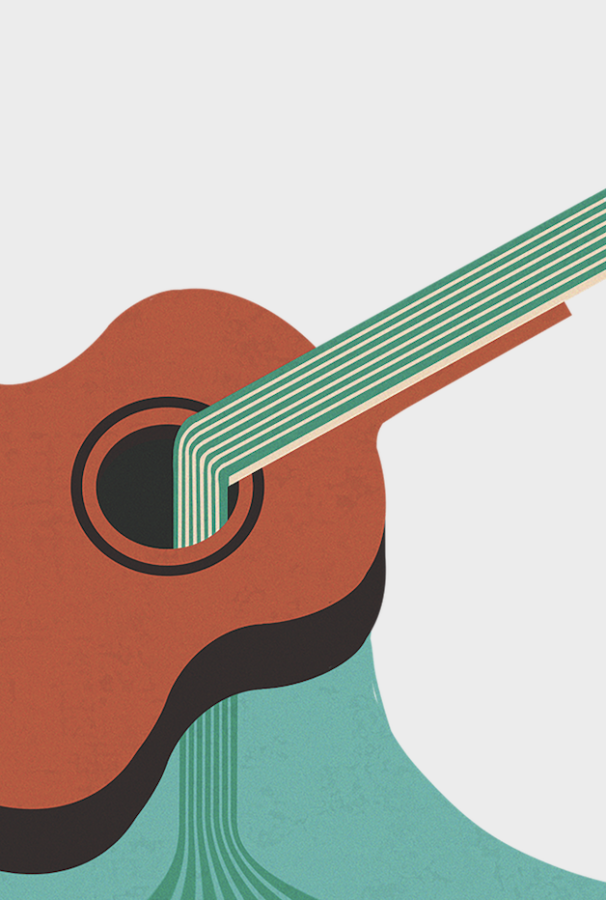Unforgettable Artists
Music is constantly evolving with each generation, but what makes some songs stick around?
One of sophomore Clare Antonow’s favorite tunes catches her ear as she cranks up the volume in her car. There is nothing like your favorite blast-from-the-past song to uplift your day, and for Antonow, this song is “American Pie” by Don McLean.
“I was six when my dad showed me this song,” Antonow said. “I loved it so much that I memorized every lyric of the eight-minute song and performed it in front of my 1st-grade class, and I still know all the words to this day.”
Songs with sentiment remain present in many people’s lives, being passed down through family members or memorable life experiences. Producing a timeless song or becoming a timeless artist—a musician whose music remains popular long beyond the peak of their career—is a difficult task for any artist to achieve. With the rapidly changing nature of pop culture and the constant cycle of trends, the musicians who are successful in keeping their music relevant deserve all the more praise.
Many musicians of the past remain popular today because of their ability to appeal to large audiences. Some music fans, like freshman Grady McCarter, find that the quantity and variety of listeners heavily contribute to an artist’s timelessness.
“[The Beatles] persisted because they made music for a large audience,” McCarter said. “They connected to the most amount of people and they did it consistently for a long time.”
The Beatles undeniably remain one of the most popular artists to this day, with an expansive range of song types that appeals to various audiences. Many believe that for an artist to succeed in being “timeless,” their music needs to have variety; just as The Beatles have succeeded with this in the past, many current artists are likely to accomplish similar success and timelessness in the future.
The most notable current artist that stands out to students as a future timeless star is Taylor Swift, who is often recognized for spanning across multiple genres of music.
“[Taylor Swift] started off with country and then some pop and ended up with an indie-folk type vibe,” senior Ronak Monga said. “She was [also] incredibly popular…for a lot of people growing up.”
Childish Gambino is another artist recognized for the diversity of their music by many music fans, like senior Wallie Butler. “Childish Gambino is a really good example of [versatility],” Butler said. “Something that is remembered in really good artists is the versatility that they have in their music—people that can use their mediums well, and develop great lyricism, [and] flow.”

Artists lacking variety can often also succeed in becoming a “timeless” artist by standing out as the best in their genre. “[Drake] will be the most timeless because whenever I think of rap, I think of Drake,” senior Thea Enache said. “He always finds a way to stay in the media and everything he has released has [been a] hit.”
Some one-hit-wonders seem to remain timelessly popular, regardless of their band’s success. For senior Ella Jauregui, these songs all share a wow factor. “A song is timeless when there is at least one spot that makes you exclaim out loud, ‘damn, this is amazing,’” Jauregui said.
No matter the genre, many believe that feel-good music often contributes to an artist’s timelessness because of its ability to resonate with many generations.
“[The Beatles, Bee Gees and Billy Joels’] style of music is something that’s always going to sound good,” Antonow said. “They all have their individual styles, but [their music is] consistently good and people consistently enjoy it … obviously [the music] associates with certain decades, but it can be enjoyed at any period of time.”
Like Antonow, Butler notices that music that resonates with listeners is often the music that remains popular. “[Timeless musicians] are able to use their mediums really effectively and evoke a lot of emotion in music,” Butler said. “Music that makes you feel something will last a long time because it’s more than just chords and all that.”
Emotion-evoking music is defined differently for each person; for Jauregui, music resonates with her when it’s reassuring and comforting, and gives her a sense of belonging. “What will persist in the future is music that people can relate to and that makes them feel either motivated, powerful, relaxed or happy,” Jauregui said. “Everyone wants to feel like they are in the right place, so songs that do that will definitely persist in the future.”

As far as relatable musicians go, many artists have succeeded by appealing to the teen generation by singing about common teenage experiences and emotions.
“I immediately thought of Paramore [as a timeless artist] because they definitely have a seat at the pop-punk table,” Butler said. “Their lyricism and the stuff they sing about, like teen angst, will always be relatable.”
Beyond relatable music, musicians that create a brand for themselves often gain a large fan base because of the media coverage of their relationships, outfits and social life. Artists who gain recognition in the media, whether through awards or dramatic headlines, are usually more likely to remain relevant.
“For an artist to become popular, the music has to be good, but they also have to have [an image] that’s popular as well because of celebrity culture,” Monga said. “They have to be interesting enough for the public to like them, but I don’t think that [their] music necessarily has to be extremely innovative.”
However, producing outstanding, innovative music can result in a trickle-down effect impacting generations of future music.
“I see a lot of reflection of [timeless artists’] style in music nowadays,” Butler said. “For example, Tame Impala has a really modern take on the psychedelic rock thing.”
Changing the sound of a decade is a difficult task, but several artists have succeeded in the past and many continue to do so. Music listeners praise Silk Sonic, Frank Ocean and Lil NAS X as progressive artists in today’s music scene.
“Silk Sonic is [a generation-defining group] because they made that music genre [soul] more accessible to everyday listeners of the radio,” Antonow said. “Frank Ocean [was also a generational defining artist] because he started to [popularize] more ‘chill’ music—less upbeat music, but not necessarily sad music.”

Moving forward, music listeners predict that the use of electronic sounds and heavier music production will have a greater presence than traditional vocals and instruments.
“People are going to become a lot more creative,” Monga said. “Instead of just your classic drums and guitar, I see [the use of] more sounds and interesting things. People are appreciating [unique sounds] more in music, so that will become more popular.”
Additionally, many believe that popular, timeless music will expand beyond traditional pop and into other genres. Artists like Silk Sonic are gaining greater recognition for their music in genres such as rap, soul and R&B.
“[Silk Sonic is] one of the first soul types of beat that has gained a widespread appreciation,” Antonow said. “Music genres are gaining more appreciation in general, so I’d say popular music is becoming more broad in its categories.”
Art by Kellyn Scheel
Print Issue
Please click on the three vertical dots on the top right-hand corner, then select “Two page view.”

2019-2020 - Staff Writer
2020-2021 - Social Media Manager
2021-2022 - Editor-in-Chief
I joined C Mag because I was excited to bring text stories...

2020-2021 - Staff Writer
2021-2022 - Managing Editor
I joined CMag because I was interested in writing about arts, music, and culture and...







